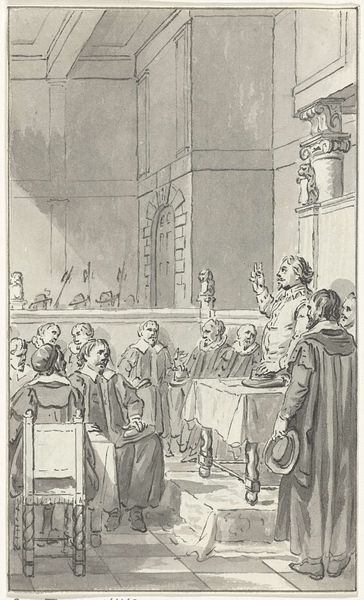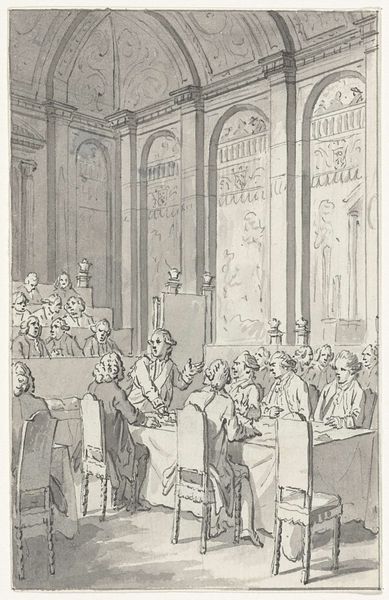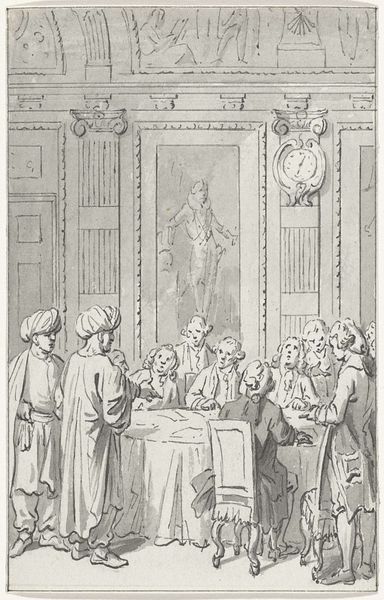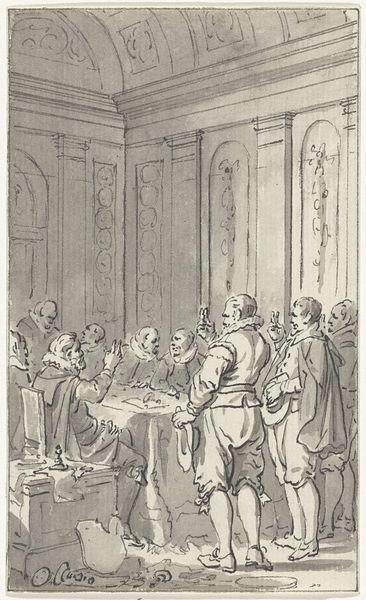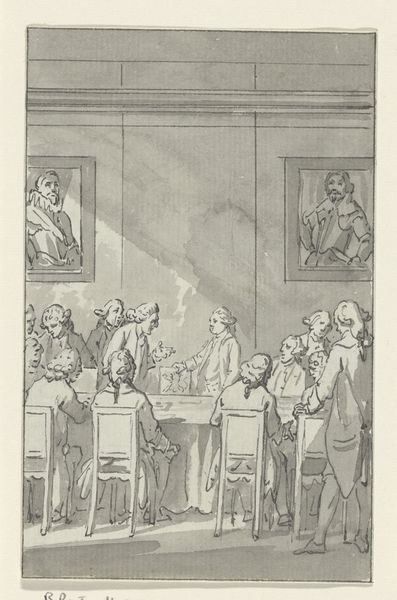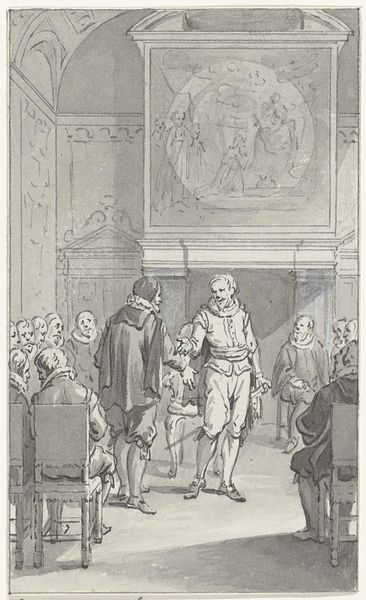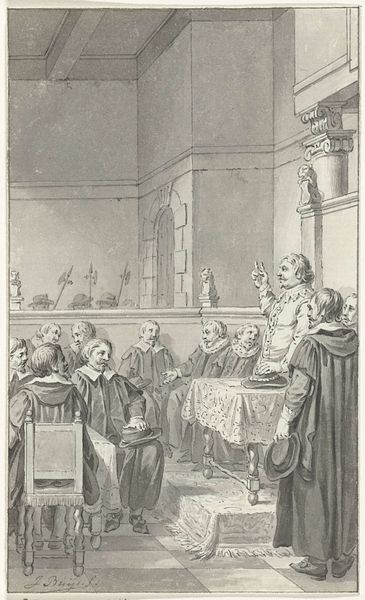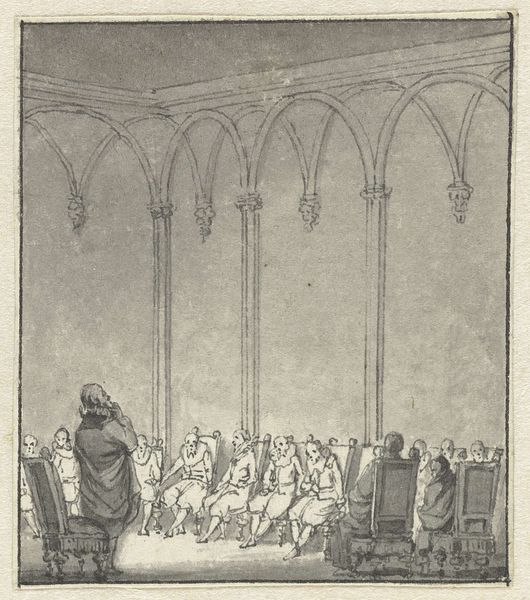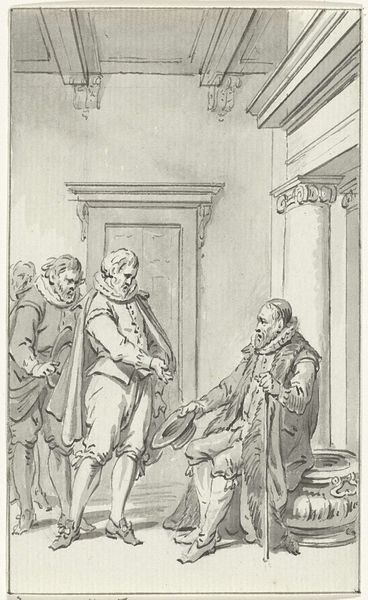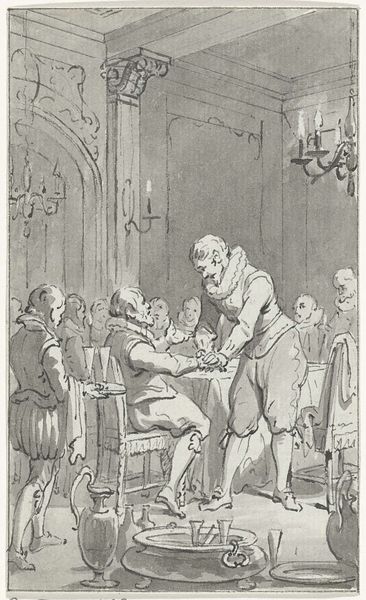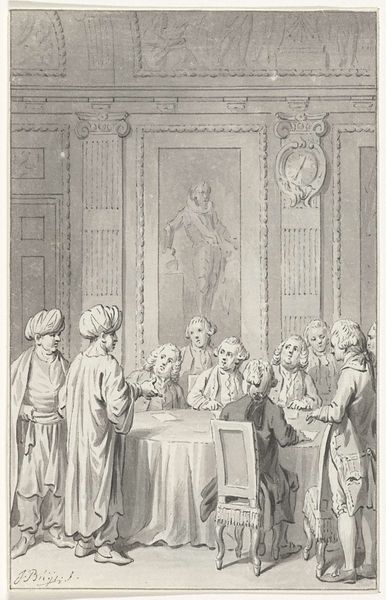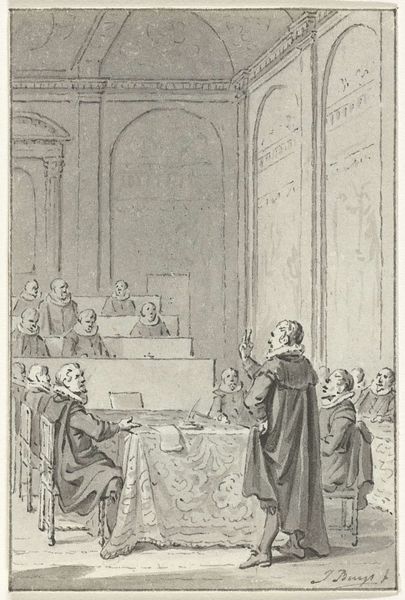
Johan van Oldenbarnevelt voor zijn rechters, februari 1619 1779 - 1784
0:00
0:00
jacobusbuys
Rijksmuseum
drawing, ink, pen
#
portrait
#
drawing
#
neoclacissism
#
ink
#
sketchwork
#
pen
#
genre-painting
#
history-painting
Dimensions: height 148 mm, width 89 mm
Copyright: Rijks Museum: Open Domain
Editor: This drawing, “Johan van Oldenbarnevelt before his Judges, February 1619,” made with pen and ink by Jacobus Buys, feels incredibly tense. The almost sketch-like quality gives it a sense of immediacy. The composition, with the judges seated and Oldenbarnevelt standing before them, sets up a clear power dynamic. What’s the historical context here that might inform our understanding of this image? Curator: The tension you perceive stems directly from the subject matter. Oldenbarnevelt was a pivotal figure in Dutch history, essentially the statesman who shaped the young Dutch Republic. This drawing depicts a moment from his trial for treason, which ultimately led to his execution. Think about the date, 1779-1784, when Buys created this. The Dutch Republic was facing its own internal political divisions and struggles for power. Editor: So, you are suggesting that this history painting also reflects on its present? Curator: Precisely! Buys, working during a period of renewed political strife, uses this historical moment to comment on justice, power, and the fate of political leaders. The choice to depict this specific scene, Oldenbarnevelt facing judgment, speaks to anxieties about political stability and leadership in the late 18th century. Notice how the seemingly objective and 'Neoclassical' style can be deployed to send an entirely different message through a history painting. The courtroom is bare, with an audience made up of stern figures, to make sure justice is seemingly applied by a legitimate source of power. Does that add new weight to the “immediacy” that you noticed initially? Editor: It does. It is now so much more than just a moment. Thanks, this helped to contextualize it. Curator: Indeed! Considering the historical and political circumstances can truly deepen one’s appreciation. It prompts questions about the purpose and influence of such history paintings.
Comments
No comments
Be the first to comment and join the conversation on the ultimate creative platform.
